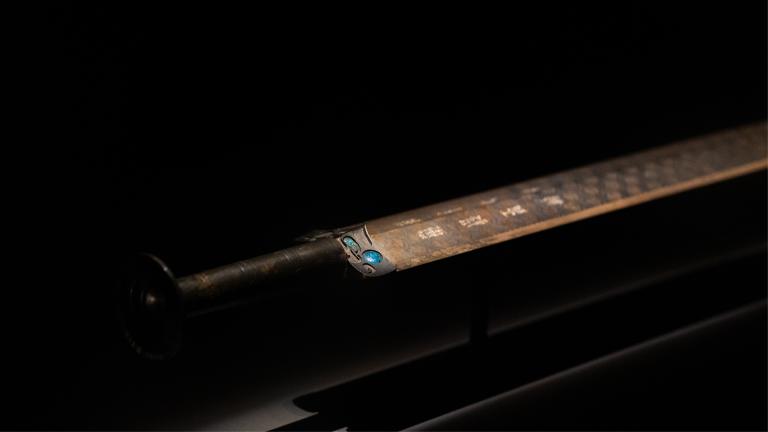
Read more about Medieval History

For many warriors, swords have been seen as indispensable. However, swords haven’t always been used just in battle. Some have been put to ceremonial purposes, such as at coronations.
Many swords of the past are now much better known than the individuals who wielded them. Other swords are of doubtful provenance, though this certainly can’t be said of those on Sky HISTORY’s Battle Treasures with Foxy and Bruce. Here are several of history’s most extraordinary swords, both real and legendary…
Did King Arthur actually exist? The general consensus among historians these days is that he didn’t. So, by extension, his famous sword Excalibur is also deemed mythical.
Despite this sobering reality, the fables about Excalibur make fascinating reading even today. One story is that Arthur, as a boy, proved himself the true British king by pulling the sword out of a stone.
Hang on (as the young Arthur literally did, so the legend goes), are Excalibur and the famed Sword in the Stone the same blade? There is a different version of the Excalibur story — one where the Lady of the Lake gives Arthur the sword.
The Louvre Museum in Paris is famously home to the Mona Lisa. The building also holds Joyeuse, a sword reputed to have been the pride and joy of Charlemagne, King of the Franks from 768 to 814.
The ‘reputed’ part of that sentence is worth underlining. It is not entirely clear whether the Joyeuse now on display in the Louvre actually is the same one that once belonging to Charlemagne.
However, the former has been dated to at least the 13th century. For hundreds of years, it was customarily used at French royal coronation ceremonies — right up until that of Charles X in 1825.
In 1965, archaeologists found an entombed ancient sword in China’s Hubei province. Given that the tomb had been waterlogged for more than 2,000 years, the team didn’t have high hopes for the sword’s condition.
However, when they unsheathed the 55.6cm-long weapon, it turned out to be in a remarkable state of preservation. Its 4.6cm-wide bronze blade looked as good as new. It is thought that its rustproof metals, sulphur-treated surface and snug scabbard had all helped to keep tarnishing at bay.
Inscriptions on the sword mention the ‘King of Yue’, a now long-defunct Chinese state that existed during the first millennium BC. Experts now generally agree that the sword belonged to Goujian, who reigned as King of Yue from 496 to 465 BC. Today, the Sword of Goujian is kept at the Hubei Provincial Museum.
When you think of the Sutton Hoo hoard, you likely immediately picture its most famous treasure, the distinctive helmet. However, that’s just one of many Anglo-Saxon artefacts excavated in the Sutton Hoo area near Woodbridge, Suffolk since the 1930s.
Another that tends to get somewhat overlooked is the Sutton Hoo sword. This was uncovered at the Sutton Hoo ship-burial site and is now at the British Museum in London. There, you can take your time admiring the blade’s resplendent gold fittings — including the guards’ gold plates and the grip’s gold mounts.
To the Vikings, swords weren’t just weapons. Many Vikings would have looked upon swords in much the same way that we perceive expensive jewellery today. In other words, they were seen as prestigious, luxury items — not the type just any Viking could financially afford.
Viking swords were also passed down from generation to generation, like family heirlooms. Losing a sword would have felt like losing your life savings.
Unsurprisingly, though, Viking swords were still primarily used for combat purposes. Often, these swords had double-edged blades (i.e. blades sharp at both edges). Foxy and Bruce get to handle a particularly eye-catching Viking sword in Battle Treasures.
Throughout Battle Treasures, presenters Jason Fox and Bruce Crompton check out various artefacts and shine a light on how they would have been used. The series gives you great opportunities to see pieces relatively little-known to the public.
Such pieces include what is thought to be the ‘sword of honour’ presented to British general Sir John Moore after the Battle of Alexandria in 1801. The British victory in this conflict helped bring an end to the French army’s Egyptian campaign originally launched by Napoleon Bonaparte in 1798.
Looking to — ahem — sharpen your historical knowledge? We’ve got plenty of intriguing new shows coming up — subscribe to the Sky HISTORY Newsletter to learn more.